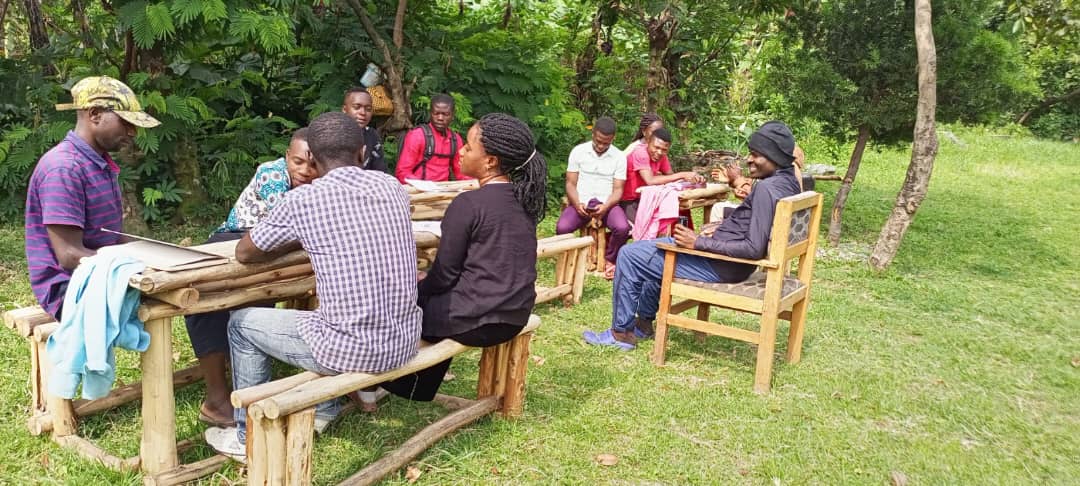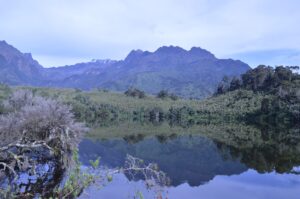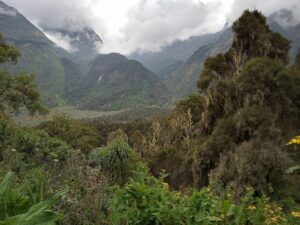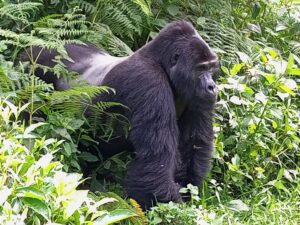Background of community development in Ruboni
Women and youth are turning out to be the engine of rural development. these two social groups are on the forefront of community development in Ruboni village. Thanks to Ruboni Community Conservation and Development Program (RCCDP) through her tourism, conservation and community development initiatives.
youth and women empowerment through given them leadership roles and involvement in decision making has been proved right in the Ruboni village. Ruboni village a small mountain community tucked in the Rwenzori foothills. In this community agriculture and tourism are the main livelihoods. The women till the land to answer all the food needs for their families.
community development is mainly caused by the local efforts as they generate revenue from tourism, agriculture, selfhelp and other social development voluntary initiatives. The local people pool together their local resources mainly labor, food and local materials. in the past, women and youth were excluded from doing managerial roles or participating in communal work until RCCDP discovered that these two groups are necessary in order to achieve equitable community development. this journey started in 1998 with the creation of RCCDP
Traditional livelihoods in Ruboni village:
Until recently, agriculture was only for the supply of food and tourism was the only source of cash. However, the women were traditionally not allowed to go up the mountains, in fear that it is a taboo since the mountain god would be offended.
While the men climbed the mountains with tourists, the women would farm in the neighboring forests and on the hills to provide food and other household basic needs. By then, very few youth went to school. The girls would get married at an early age while the boys would start their won family and start the work of guiding tourists on the mountains, just like their fathers.
Tourism on Rwenzori mountains:
When Rwenzori mountains National park was created in 1991, the game changed. All village farmers were stopped from farming in the forest just turned into national park. This meant a lot of negative experience for the local community members, especially the households that had children to feed and other domestic needs such as firewood, medicinal plants, crafts materials, all that they used to collect from the forest.
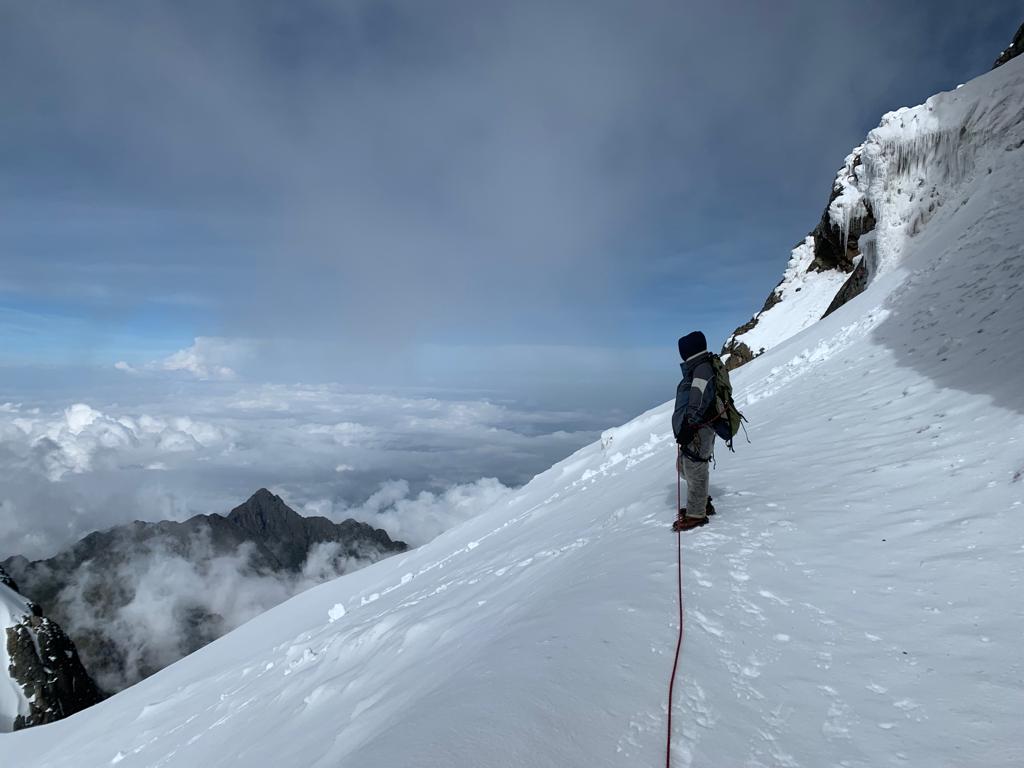
Speaking to one young man who was a child then, he mentioned that his grandmother’s garden was taken by the park and they were stopped from harvesting the yams that were in this garden after the park was created. Famine, lack of firewood and natural resources for building and making hand crafts all arose.
Youth drain from Ruboni, and the community response
In the immediate years, the young boys and girls had to move to far areas, especially urban centers to look for jobs as house helpers. Most children dropped out of school since they were looked at as a source of labor to cover up for the labor lost to towns.
In response to the natural resource crisis that had just happened, in 1998, the community members came together to start a local movement that would help the local community address the challenge. This is the origin of Ruboni Community Conservation and Development Program (RCCDP). RCCDP mission was, to encourage local community participation in environment conservation with an aim of benefiting the local people through sustainable development.
RCCDP happens to be the first institution that established community tourism in the Rwenzori gateway. The belief was, using tourism as a vehicle for conservation and community development, required that, tourists should be able to stay longer in the village and spend some money to the local people directly. Originally 0% of tourists stayed in Ruboni village before and after their trek to the Rwenzori Mountains. Tourists would come and enter the park on the same day, then at the last day; they would immediately move to Kasese or Fort portal town hotels.
Tree planting interventions for women and youth empowerment
At the beginning, the RCCDP started with planting trees, improved agriculture, and skilling on household level. This was so that they can increase land output to provide surplus income and food on the households. The next step was creating of a community forest reserve in the buffer of the national park. This was so that they can target the tourists to experience Rwenzori nature while in the community while the forests act as a natural resource bank for the community. The tourist trails were created in the forest.
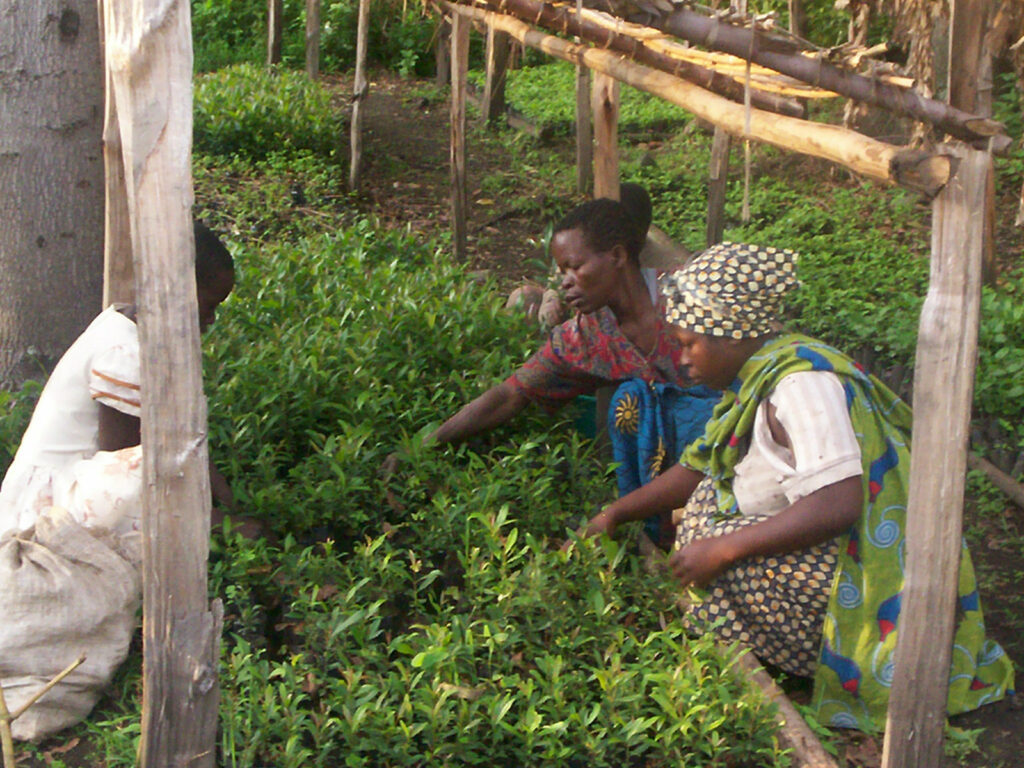
Along with the tourist trails in this Buraru community forest, RCCDP created other tourism interventions including, a crafts shop, a hill trek trail, a village walk with several household tourist stopovers, Ruboni Community Camp, a community lodge with a restaurant.
After the creation of the trails, the tourist lodge, gift shop and household stopovers, RCCDP recruited the youth to work as guides, women as hospitality providers and crafts weavers. Initial skills training and afterwards, tourism ran along with other community development initiatives that were being run.
Through tourism, the women and youth have got opportunities of getting skills, income when they provide the labor and hospitality. As a result, Ruboni community has been able to achieve massive tourist’s stays in Ruboni village. To-date, 95% of the tourists visiting Rwenzori mountains through Nyakalengijo gate, spend a night(s) in Ruboni community. This reflects into tourist expenditures made in the local businesses.
Youth involvement in tourism:
Ruboni tourism projects have created employment to the youth and women in Ruboni village. A total of twenty youth and 5 women get direct full time employment. 100 women have been trained on handicrafts making and they sell their crafts items to the tourists in the gift shop. Other 100 youth work as part-time porters, guides and chefs with tourist going up to the mountains.
As a result, Ruboni community tourism products not only prevents the youth from moving to urban centers, but also attract youth from the training colleges in the urban centers to come and work in the village. These students come either as workers or as student interns to come and acquire the tourism skills.
Besides the tourism project of RCCDP other investors have established other businesses that are supported by tourism. These include the bars, produce sale points, produce value addition initiatives such as wine making, beekeeping and honey packing, coffee processing, and general merchandise shops. These businesses employ locals with 60% mainly women and youth. This increases the effort of women and youth contributing to local development of Ruboni village.
On the planning levels, youth are heading the development too. The youth have formed groups such as the Ruboni guides association, tourist equipment hire shops, Ruboni tourism village committee, and other groups that are engaged in the tourism development processes of RCCDP. Other committees’ within RCCDP such as Ruboni child sponsorship project, Ruboni farmers group, and the board of Ruboni community conservation and development program have 50% composition of women and youth.
Other tourism initiatives prioritizing women and youth:
The community visitor’s center currently housing several women and youth empowerment projects as a new chapter of using tourism to promote gender sensitive initiatives. The Community viositor’s Centre has a kitchen run by young mother who dropped out of school during the covid19 emergency, the crafts shop is run by young ladies who also ended their school journey during covid19. The gift shop sales women-only made gifts from Ruboni village. The center creates a space for women training. The young mothers are trained on computer/ digital skills, menstrual hygiene and making sanitary pads.
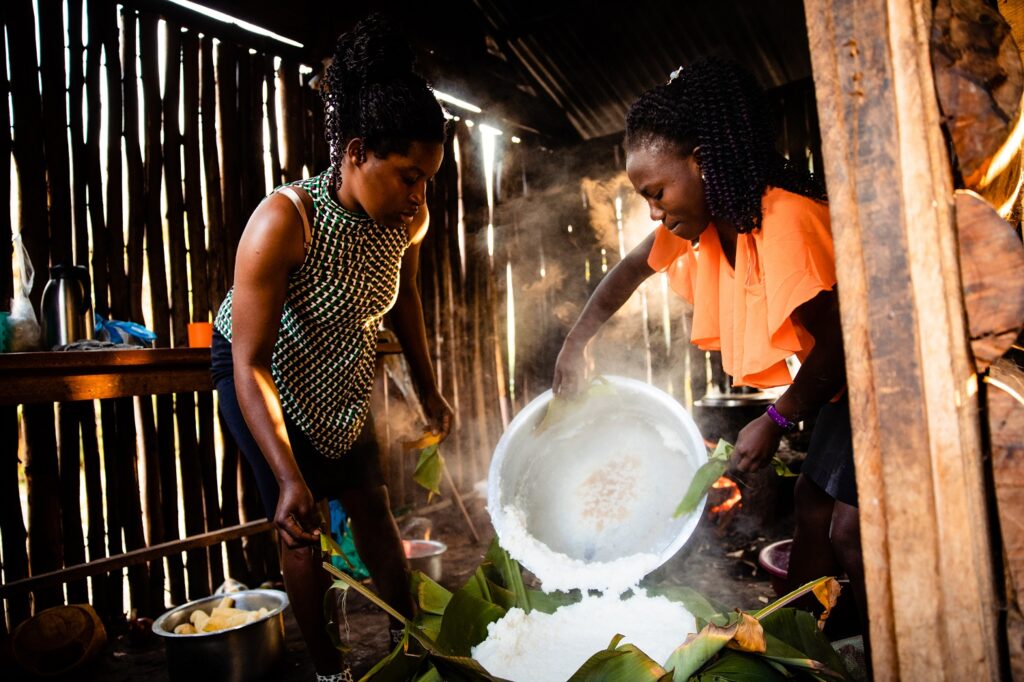
The village bank; Ruboni Development Sacco is another initiative that has been created by RCCDP. This initiative is also housed at the community visitor’s Centre. The Sacco links tourism, agriculture, conservation and innovation. The Sacco helps to create finance for household and individual investment within the village. The local people keep their income from tourism, agriculture and other businesses; this finance is borrowed as loans to support local innovations in business and investment. Some of the initiatives that have been supported include; making banana wine from green bananas, honey processing and packing by local farmers, coffee roasting initiatives, and other trading or household investments.
The village Sacco was initiated by the Ruboni community farmers who are planting trees. These farmers group was initiated by the Ruboni community tourism initiative at the early stages of using tourism as a vehicle for generating conservation resources. Up to now, the village Sacco receives the carbon payments to these farmers. The money is then invested in conservation and other household investments that reflect in equitable employment for men, women and youth.
Scaling of the Ruboni best practice
Ruboni community youth and women empowerment has not only ended in itself. Other like communities have been inspired and mentored by the team working in Ruboni Community tourism, conservation and development initiatives. A case in point is the Kikorongo community near Queen Elizabeth national park.
Kikorongo community has created the Elephant home and campsite. This lodge creates direct and indirect employment for the women and youth as it offers the hospitality and tourism activities to the travelers visiting Queen Elizabeth national park. a bodaboda safari is entirely run by the youth, the lodge employees five youth on a full time basis, a dancing group is made up of 15 local youth and women, the gift shop at the lodge stocks women made handicrafts.
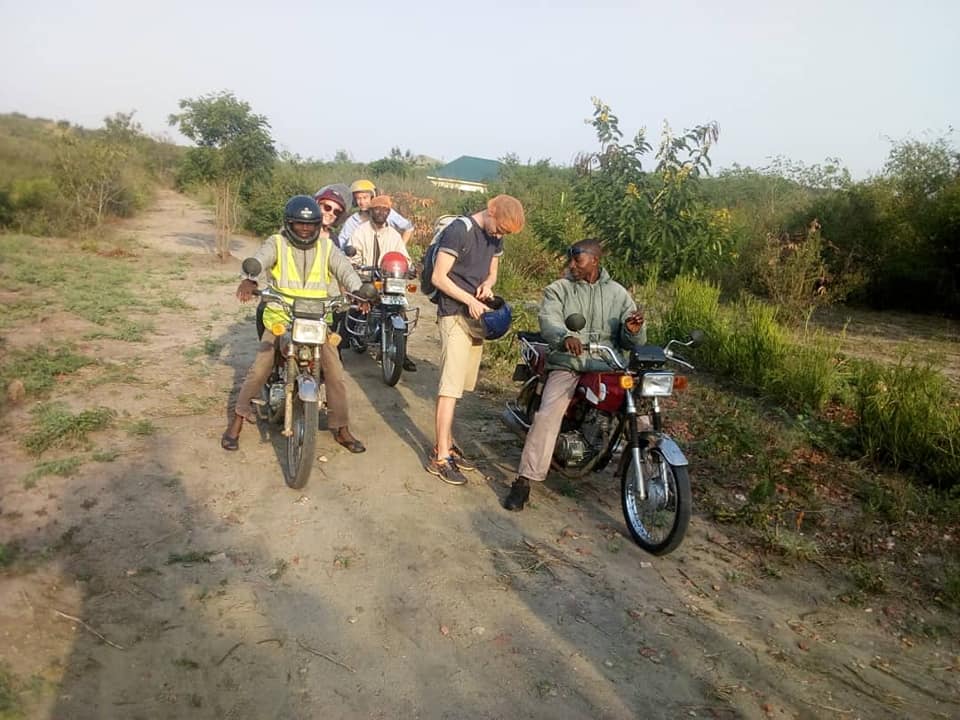
The lodge also offers adult learning classes to women and English speaking lessons to children. Other innovations started by the elephant home include creation of a local enterprise development support scheme, A youth CBO that is trained on different skills such as waste management, energy briquettes making, tree planting, organic agriculture and many more. For the guests looking for tourism that empowers local communities, the stay at the Elephant home is more than just visiting Queen Elizabeth National Park.
Until now, Ruboni community closely shares knowledge, staff and clients with Kikorongo community. In the end, the Elephant home has turned out to be a leader in sustainable tourism development near Queen Elizabeth National park and a favorite of travelers to Queen Elizabeth National Park. All these tourism, conservation and community development benefits in kikorongo village can somehow be attributed to the establishment and support of Ruboni community conservation and development program.

